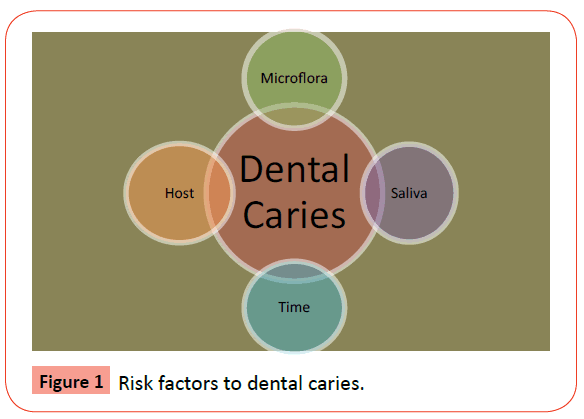Genetic Modified S. Mutans: A Key To Combat Dental Caries (Editorial)
Dr. Rajiv Saini
Department of Periodontology & Oral Implantology, Pravara Institute of Medical Sciences-Loni, Maharashtra, India
- *Corresponding Author:
- Dr. Rajiv Saini
Associate Professor, Department of Periodontology & Oral Implantology
Pravara Institute of Medical Sciences-Loni, Maharashtra, India
Tel: +91-9923206789
E-mail: drperiodontist@yahoo.co.in, drrajivsaini@gmail.com
Received date: January 25, 2016; Accepted date: January 25, 2016; Published date: February 01, 2016
Citation: Saini R. Genetic Modified S. mutans: A Key to Combat Dental Caries. J Orthod Endod. 2016, 2:1.
Abstract
Dental Caries is a major public health concern worldwide, affecting more than 80% of the population alive in the world today. Its impact on individuals and communities�as a result of pain and suffering, impairment of function, and reduced quality of life�is considerable [1]. Dental caries initiation and progression is dependent upon four independent factors as illustrated in Figure 1. Its incidence can be prevented by modification of one of the four factors mentioned in Figure 1. However due to limited access to professional care, oral hygiene education, health status, huge population and economic limitations the total preventive programs for dental carries cannot be fully successful. This lead to explore the alternate ways to combat this complex situation, one of such promising concept is bio-engineering modified S. Mutans.
Dental Caries is a major public health concern worldwide, affecting more than 80% of the population alive in the world today. Its impact on individuals and communities—as a result of pain and suffering, impairment of function, and reduced quality of life—is considerable [1]. Dental caries initiation and progression is dependent upon four independent factors as illustrated in Figure 1. Its incidence can be prevented by modification of one of the four factors mentioned in Figure 1. However due to limited access to professional care, oral hygiene education, health status, huge population and economic limitations the total preventive programs for dental carries cannot be fully successful. This lead to explore the alternate ways to combat this complex situation, one of such promising concept is bio-engineering modified S. mutans.
Few of the measures taken are. i) Genetically modifying the S. mutans: ii) Searching the antagonist peptides to work against the specific enzyme system (Glucosyltransferase) of S. mutans. iii) Changing the oral environment by those genetically modified organisms that will produce bases (instead of acids) & these bases provides a milieu favouring remineralisation [2]. BCS3-L1 strain derived from S. mutans isolate under bio-medical laboratory settings provide an optimistic effector strain. Bio-engineering technology was used to delete the gene encoding lactate dehydrogenase in BCS3-L1 making it entirely deficient in lactic acid production.
This effector strain was also designed to produce elevated amounts of a novel peptide antibiotic called mutacin 1140 that gives it a strong selective advantage over most other strains of S. mutans. In laboratory and rodent model studies, BCS3-L1 was found to be genetically stable and to produce no apparent deleterious side effects during prolonged colonization. BCS3-L1 was significantly less cariogenic than wild-type S. mutans in gnotobiotic rats, and it did not contribute at all to the cariogenic potential of the indigenous flora of conventional Sprague-Dawley rats. And, its strong colonization properties indicated that a single application of the BCS3-L1 effector strain to human subjects should result in its permanent implantation and displacement over time of indigenous, disease-causing S. mutans strains. Thus, BCS3-L1 replacement therapy for the prevention of dental caries is an example of biofilm engineering that offers the potential for a highly efficient, cost effective augmentation of conventional prevention strategies [3].Studies on twins have provided strong evidence for the role of inheritance. Establishing a basis for a genetic contribution to dental caries will provide a foundation for future studies utilizing the human genome sequence to improve understanding of the disease process. Inherited disorders of tooth development with altered enamel structure increase the incidence of dental caries. Specific genetic linkage has not been determined for all of the syndromes of altered tooth development. Consequently, genetic screens of large populations for genes or mutations associated with increased caries susceptibility have not been done. Altered immune response to the cariogenic bacteria may also increase the incidence of caries. Association between specific patterns of HLA genetic inheritance and dental caries risk is weak and does not provide a predictable basis for predicting future decay rates. The evidence supporting an inherited susceptibility to dental caries is limited. Genetic linkage approaches on well-characterized populations with clearly defined dental caries incidence will be required to further analyze the relationship between inheritance and dental caries.
S. mutans is the key pathogen associated with dental caries in humans. Therefore, it is reasonable to advocate that definite phenotypic characteristics could be expressed by genotypes best fitted to live and/or grow in adverse environments [4].
References
- The world oral health report (2003) Geneva: World Health Organization.
- Agarwal S, Pandit IK, Srivastava N, Gugnani N (2003) Genetic engineering and dental caries. Indian J Dent Res 14: 284-288.
- Hillman JD (2002) Genetically modified Streptococcus mutans for the prevention of dental caries. Antonie VanLeeuwenhoek 82: 361-366.
- Shuler CF (2001) Inherited risks for susceptibility to dental caries. J Dent Educ 65: 1038-1045.
Open Access Journals
- Aquaculture & Veterinary Science
- Chemistry & Chemical Sciences
- Clinical Sciences
- Engineering
- General Science
- Genetics & Molecular Biology
- Health Care & Nursing
- Immunology & Microbiology
- Materials Science
- Mathematics & Physics
- Medical Sciences
- Neurology & Psychiatry
- Oncology & Cancer Science
- Pharmaceutical Sciences

